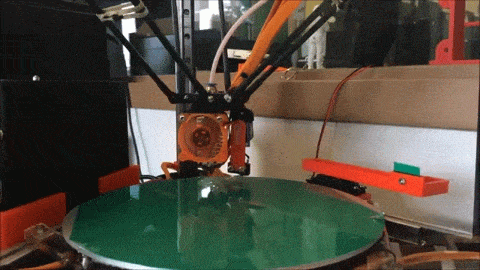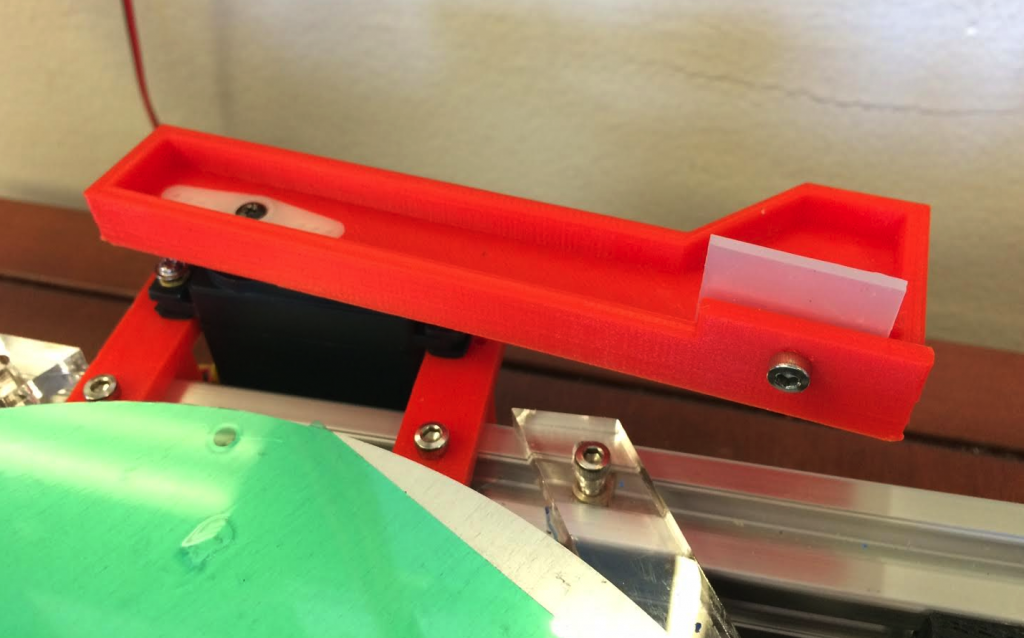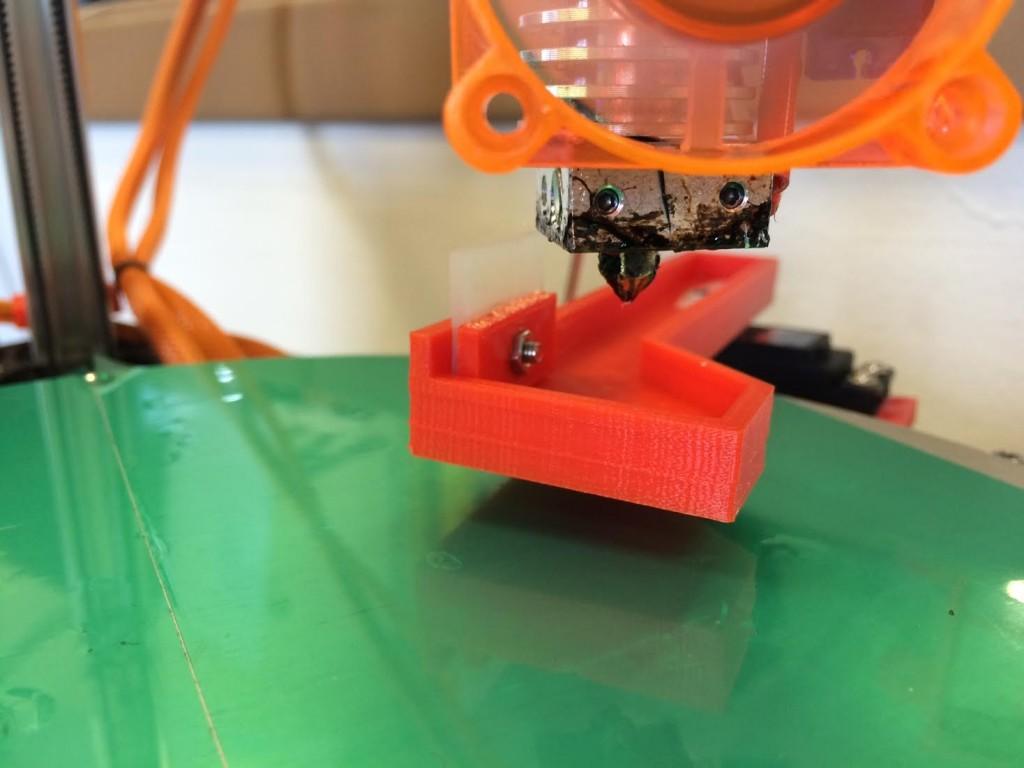 Ever since desktop 3D printers have been in existence, they have attracted a crowd of individuals who seemingly love to hack, modify, and innovate upon their machines. The open source movement has added fuel to a fire that continues to burn with enthusism and continual innovation. It seems as though every couple of weeks we see a new idea come about which enhances the 3D printing process in some way, shape or form.
Ever since desktop 3D printers have been in existence, they have attracted a crowd of individuals who seemingly love to hack, modify, and innovate upon their machines. The open source movement has added fuel to a fire that continues to burn with enthusism and continual innovation. It seems as though every couple of weeks we see a new idea come about which enhances the 3D printing process in some way, shape or form.
For one electrical engineer, named John Fuoco, problem solving is not something he is new to. In fact, he spends his day as a maintenance engineer where he diagnoses problems on CNC machines, which he then must come up with solutions for.
“Whether it’s a machine fault or a process issue, my job is to try to come up with a solution or machine modification so we never have that problem again,” Fuoco tells 3DPrint.com. “I find CNC machines interesting enough that I tinker with them at home. I have a Shapeoko 2 CNC router, (pretty heavily modified) which quickly made me buy my first 3d printer.”
That first 3D printer was a Bukobot kit and being the “tinkerer” he is, Fuoco modified that quite heavily as well. One such modification was the extension of the X-axis, which allowed him to create a dump area where the two extruders could prime and then come in contact with a silicon wiper blade before feeding over to the print bed.
“It’s nice because you don’t have to run laps around the printed parts on the first layer in order to get the flow going,” he tells us.
Fast forward to current time, and Fuoco recently purchased a FolgerTech kit, a delta-style 3D printer–which he actually learned about from reading an article here on 3DPrint.com. He wanted an affordable 3D printer, and there was just something about the FolgerTech 3D printer, and delta printers in general that he thought was really cool, so he decided to get himself one. Of course, being the hacker he is, he couldn’t simply leave this 3D printer alone either.
“I started by making a new probe arm for the servo, that does the automatic bed leveling,” Fuoco tells us. “The original one is acrylic and it slipped on the servo so I made one that could use one of the servo horns and fit better. I hacked up an ATX power supply so I could have the printer turn the 12v power on and off automatically. I also added the Watterott Silent StepStick.”
As you can see in the video below, the bed leveling system seems to work quite well. This wasn’t the end of it for Fuoco when it came to hacking his FolgerTech 3D printer, though. He simply didn’t like how the filament would ooze out of the printer’s nozzle while it was running the bed leveling routine. By the time it was ready to print he had to waste about 500-1000mm of material just to prime the printer to begin a print.
“That annoyed me,” he explained, “and since I couldn’t have a delta drive off the print bed and prime somewhere else without taking up build area, I thought I should just make the dump area swing in on a servo.”
So this is exactly what he ended up doing. As you see in the video below, an innovative dump tray swings onto the build area, just a few millimeters above the platform, allowing the nozzle to be primed without having to print material onto the platform itself.
While Fuoco makes this all seem rather simple, it wasn’t exactly a piece of cake. While the RAMPS board supports up to four servos, the firmware that FolgerTech supplies for download doesn’t have the latest servo changes that deactivate the servos when they are not in motion. This causes a lot of “servo twitch.” He solved this by downloading the latest version of Marlin firmware and then reconfigured it for the FolgerTech 3D printer. This ended up working very well.
“The video shows the top edge of the plastic running into the nozzle a little bit,” he explained. “I had to correct the z-height after I did that video. I also have added the silicon material to replace the folded up PET tape shown in the video. It really does work well though. I can leave the filament retracted a little bit to prevent oozing while probing and then it can prime and wipe it clean and immediately start printing the object.”
Best of all, you can duplicate Fuoco’s creation if you’d like, as he has made the 3D printable files available for download on Thingiverse.
What do you think about these 3D printer hacks? Are they something you would like to have on your own 3D printer? Discuss in the 3D Printer Hacks forum thread on 3DPB.com.
Subscribe to Our Email Newsletter
Stay up-to-date on all the latest news from the 3D printing industry and receive information and offers from third party vendors.
You May Also Like
NSF Awards Kentucky $1M for Advanced Manufacturing
The National Science Foundation has awarded a $1 million grant to the University of Louisville for the Advancing Manufacturing and Building Construction Technologies (NSF AMT) project. This initiative is part...
3D Printing News Briefs, May 11, 2024: 3D Printed Stent, Tower, Sculptures, & More
We’re starting off with medical research in today’s 3D Printing News Briefs, as researchers in Korea used CT images and 3D printing to fabricate an educational simulator for a mastoidectomy....
3D Printing Unpeeled: Wind Turbines, Probiotics and Lenses
TPI Composites, ORNL and Ingersoll Rand are working to make wind turbine tooling segments that can be 18.3 meters long. These elements also include resistive wires that help keep the...
Tethon 3D Releases Cost-effective Bioprinter
Tethon 3D, known for its ceramic-loaded DLP materials, custom resins, and DLP 3D printers, has recently released a bioprinter. Vat polymerization printers like DLP systems have been widely used by...




































